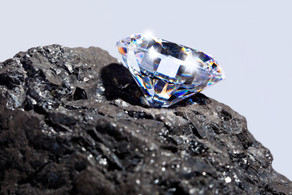|
2/8/2015 0 Comments Deep-Earth Carbon Discoveries Reveal Details on Diamond Formation and the Origin of Life By Claire Wiggins Researchers at Johns Hopkins University have discovered new information about carbon below the Earth’s upper crust, which has implications for both how diamonds are formed in the mantle, and how life may have begun on Earth. Contrary to previous beliefs, not only methane and carbon dioxide occupy the subductions zones, but also a supply of different organic carbon species. This carbon could lead to the formation of diamonds and be a possible food source for thermophilic bacteria. Via a model developed by geochemist Dimitri Sverjensky, the amount and types of carbon 100 miles below the Earth’s surface were calculated for the first time. “It is a very exciting possibility that these deep fluids might transport building blocks for life into the shallow Earth,” explained Sverjensky, professor of Earth and Planetary Sciences at Johns Hopkins. “This may be a key to the origin of life itself.” The Deep Earth Water model has helped reveal that there is in fact a great deal of carbon species dissolved in deep earth fluids. This discovery could have implications for how carbon cycles through the earth and in the atmosphere. These carbon-fluids also present a previously unknown way for diamond formation to occur. This research “is a part of a 10-year global project to further understanding of carbon on Earth called the Deep Carbon Observatory. The work is funded by the Alfred P. Sloan Foundation.” Article Link: http://www.sciencedaily.com/releases/2014/11/141120183344.htm
0 Comments
Leave a Reply. |
WELCOME, UMICH SCIENTISTAS!
CAMPUS PICS
WHAT'S NEWUPCOMING EVENTSPAST POSTS
October 2022
SORT BY TAG |
The Scientista Foundation, Inc. All Rights Reserved © 2011-2021 | Based in NY | [email protected]
The Network for Pre-Professional Women in Science and Engineering
The Scientista Foundation is a registered 501(c)(3) -- Donate!
The Network for Pre-Professional Women in Science and Engineering
The Scientista Foundation is a registered 501(c)(3) -- Donate!


 RSS Feed
RSS Feed